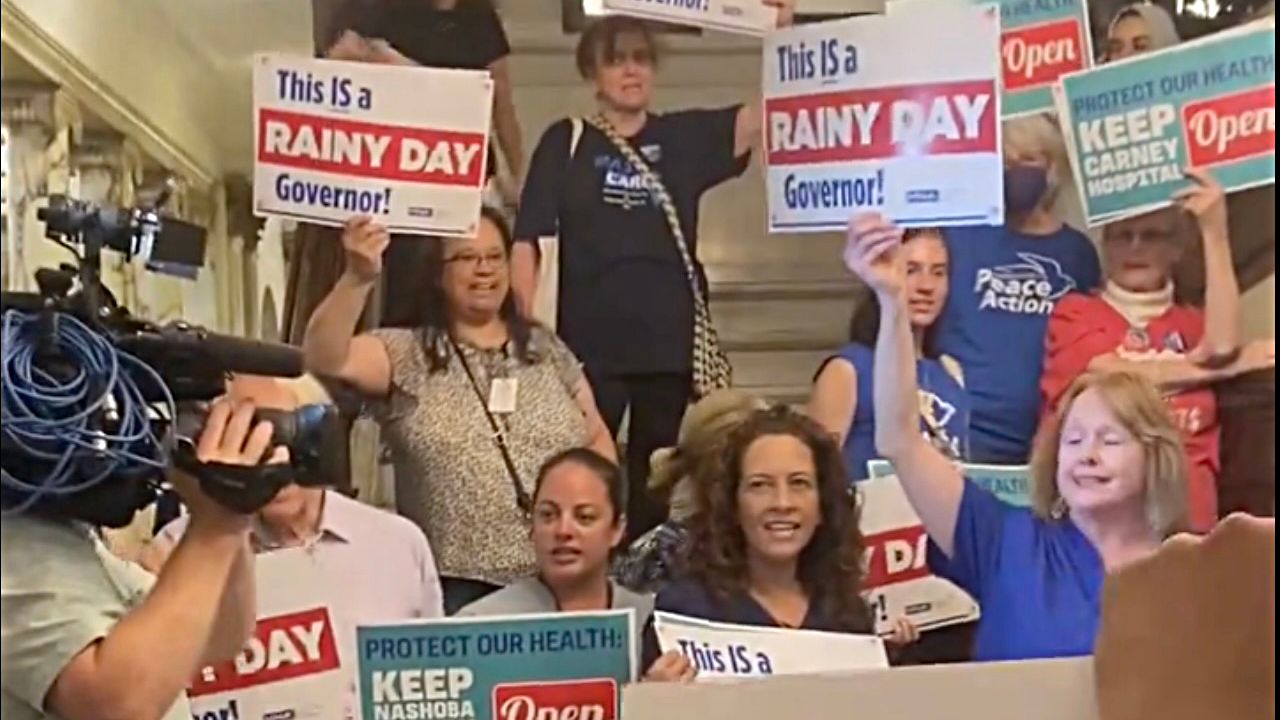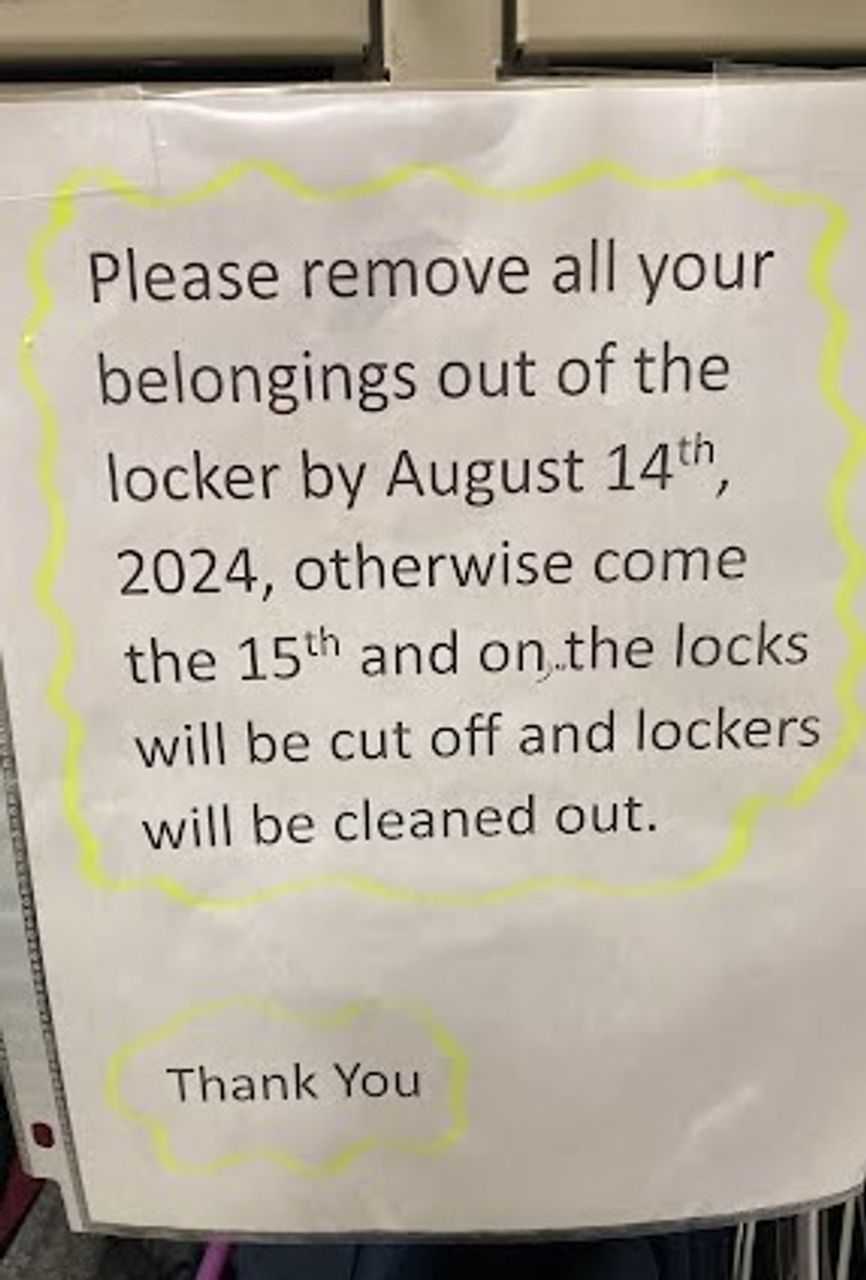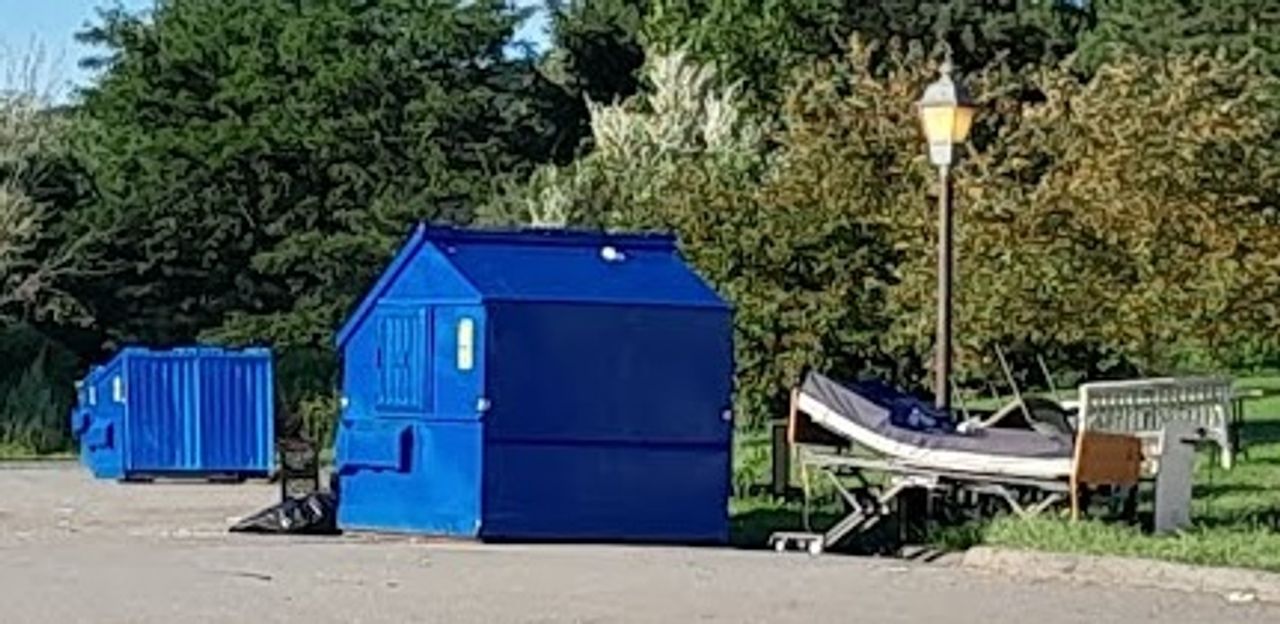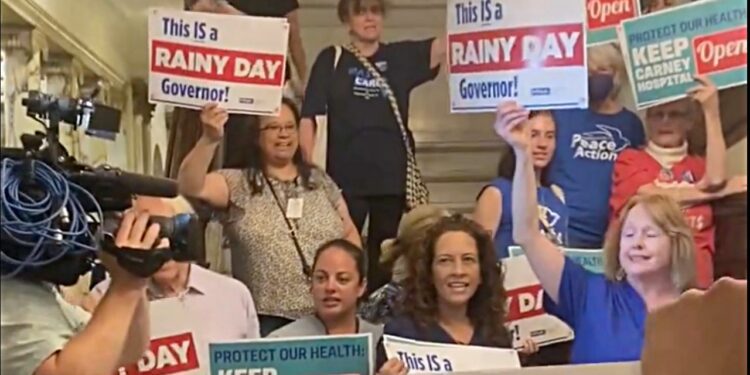 Nashoba Valley Medical Center nurses protest the closing of the hospital. July 31, 2024 [Photo: Massachusetts Nurses Association]
Nashoba Valley Medical Center nurses protest the closing of the hospital. July 31, 2024 [Photo: Massachusetts Nurses Association]
Steward Health Care plans to shutter two hospitals—Carney Hospital in Dorchester, a Boston neighborhood, and Nashoba Valley Medical Center in Ayer—by the end of August. The closures are the result of a federal bankruptcy ruling won by the deeply indebted Steward, which is based in Dallas. Nearly 1,250 healthcare workers will lose their jobs if the closures go ahead, with no guarantee of employment at other facilities.
Massachusetts healthcare workers must rally in defense of the affected healthcare workers and of the communities they serve. The Massachusetts Nurses Association (MNA), which has 23,000 members working in hospitals, schools, public health agencies and other facilities across the state, has mounted only perfunctory protests at the hospitals and at the city halls in Ayer and Boston, but these actions have been aimed only at dissipating workers’ anger.
The federal bankruptcy judge in Houston gave Steward permission to circumvent Massachusetts state law, which requires a 60-day notice for mass layoffs and 120-day notice for hospital closings. This action allows Steward to rush ahead with the closures with no regard for the communities, patients or workers involved. Workers have already been told to remove their belongings from their lockers by August 15, and hospital equipment is being dumped outside the facilities.
 Notice posted on a nurse’s locker at Nashoba Valley Medical Center
Notice posted on a nurse’s locker at Nashoba Valley Medical Center
Steward operates 31 hospitals and hundreds of facilities across eight states. The corporate healthcare giant owns eight hospitals in Massachusetts, which all will be sold or closed as part of the bankruptcy. The hospital chain provides healthcare to more than 2 million people and employs 30,000 people across the United States and in Colombia, Saudi Arabia and the United Arab Emirates. It has more than $9 billion in liabilities.
Carney Hospital and Nashoba Valley Medical Center have served thousands of patients per year for decades. The closures will make it substantially more difficult for people living in the surrounding areas to receive timely care. Carney Hospital has 159 beds, an emergency department and other services covering a wide range of specialties. It received 63,172 visits in 2022, according to the Center for Health Information and Analysis. Nashoba Valley Medical Center has 77 licensed beds and had 39,897 visits in 2022. It is also the largest employer in Ayer.
Workers all over Massachusetts are outraged by the closures. “I used to work at Norwood Hospital … [Carney and Nashoba Valley] serve areas where there are no other hospitals,” wrote a worker on Facebook in a comment about the closures. “When you need emergency care, you need it in minutes, not hours. I feel very sad for these communities. Shame on Steward and shame on the state for not stepping in to save them.”
“So, Carney Hospital is closing?” wrote a Milton resident on a different thread. “Where are all the sick and injured patients going to go?” The resident added that the hospitals “should be put into a receivership.”
“It’s worse than a tragedy. It’s a travesty fueled by greed,” remarked another person.
 Discarded hospital equipment outside Nashoba Valley Medical Center
Discarded hospital equipment outside Nashoba Valley Medical Center
Democratic Massachusetts Governor Maura Healey has rejected any action to stop the closures, saying, “There’s nothing that the state can do, that I can do, that I have the power to do, to keep [the closures] from happening.”
“The market has spoken,” Kate Walsh, Massachusetts secretary of Health and Human Services, said bluntly, according to the Boston Globe. The Healey administration allowed $11.3 million in MassHealth (Medicaid) funds to be transferred to Steward to temporarily prop up the company in preparation for the sale of Steward’s other six Massachusetts hospitals.
While Steward claims that no “qualified” offers have been made for Carney Hospital and Nashoba Valley Medical Center, the Boston Globe reports that Michigan-based Insight Health Systems had made a bid to buy all Steward’s hospitals in Massachusetts, including Carney and Nashoba Valley. Although the details of the hospital sales aren’t known, the Globe described the bankruptcy hearings in Houston as a spectacle in which “dozens of high-priced lawyers [are] tasked with maximizing the payout for an army of lenders, creditors and business partners that are their clients.”
Reacting to public pressure, Boston city councilors passed a resolution on August 7 calling for a declaration of a state of emergency and a city takeover of Carney Hospital until a new owner is secured. The town of Ayer passed a similar resolution on the same day. It is a given that the Healy administration will not act on these measures.


Steward Health Care CEO Ralph de la Torre has been subpoenaed by the US Senate Health, Education, Labor and Pensions Committee, chaired by Sen. Bernie Sanders, to testify on Steward’s bankruptcy. De la Torre, who hauls in around $16 million per year, according to an insider cited by The American Prospect, has come under scrutiny for making lavish purchases, including a $40 million yacht and two private jets, while Steward was going bankrupt. During the bankruptcy hearings, de la Torre was in Versailles, France, to view the Olympic equestrian events.
“Perhaps more than anyone else in America, Ralph de la Torre, the CEO of Steward Health Care, epitomizes the type of outrageous corporate greed that is permeating our for-profit health care system,” said Sanders in his usual bombastic fashion. But in fact, both the Democrats and Republicans support this very same for-profit healthcare system in America, which subordinates health and lives to corporate interests.
The MNA has subordinated the struggle against the Steward hospital closures to “our leaders throughout state government” who “are ultimately responsible for protecting and ensuring the public health.” They call on the state and municipalities to intervene to prop up the hospitals until they can find new buyers. On April 7, the MNA published a post on X calling on workers to attend an August 13 hearing in Boston. “This is our chance to let the governor know we expect her to save Carney to protect the health of our community,” said the post.
The only force that can protect and ensure public health is the working class, which has an objective interest in maintaining public health and jobs. The bankruptcy courts and big-business politicians, meanwhile, view as legitimate the liquidation of hospitals to pay off the debts of financial speculators and corporate vultures. Healthcare workers and community residents cannot allow hospitals to destroy jobs and dismantle healthcare services in the interest of the corporate bottom line.
Steward workers should organize rank-and-file committees, independent of the MNA and other union apparatuses, to unite healthcare workers across the state and beyond to fight against the closures of Carney Hospital and Nashoba Valley Medical Center. Workers can form lines of communication to organize rallies outside Steward hospitals that bring together workers and area residents in a fight to stop the closures and save jobs. If these demands are not met, then nurses and other healthcare workers should call strikes at hospitals across the state.
The defense of the basic right to high-quality and affordable healthcare, as well as the right to decent, high-paying jobs, requires the expropriation of the giant healthcare chains, pharmaceutical companies and private insurers and the establishment of genuine socialized medicine. If you agree with these policies, visit here to find out more about building an interconnected network of rank-and-file committees throughout the healthcare industry to fight for them.
Get information about building or joining a health workers rank-and-file committee
Source link : http://www.bing.com/news/apiclick.aspx?ref=FexRss&aid=&tid=66bade6dd9b7428baf3cf3b601115028&url=https%3A%2F%2Fwww.wsws.org%2Fen%2Farticles%2F2024%2F08%2F13%2Fwohe-a13.html&c=12650094425442454486&mkt=en-us
Author :
Publish date : 2024-08-12 15:58:00
Copyright for syndicated content belongs to the linked Source.





